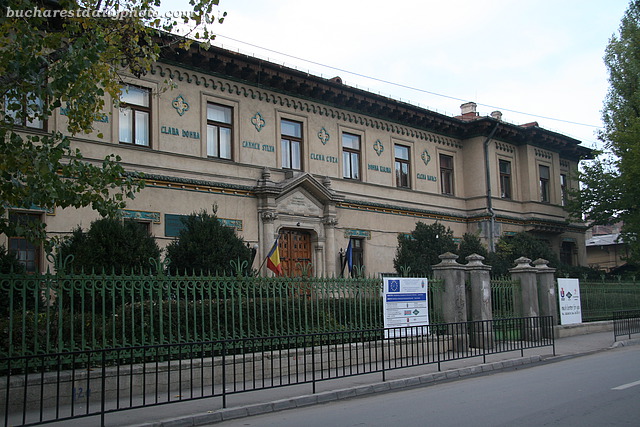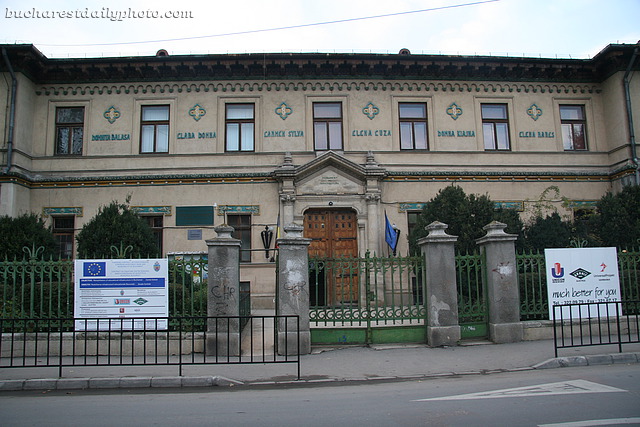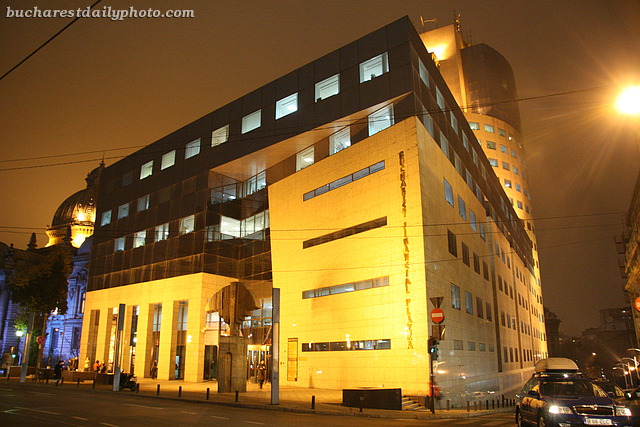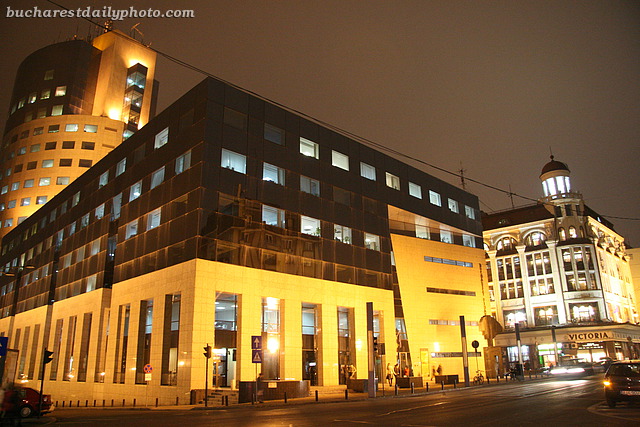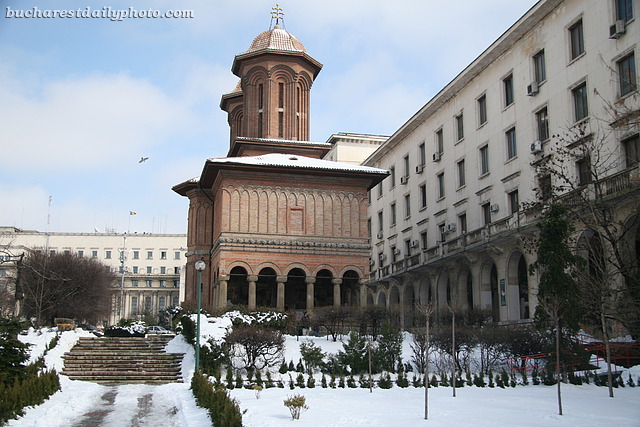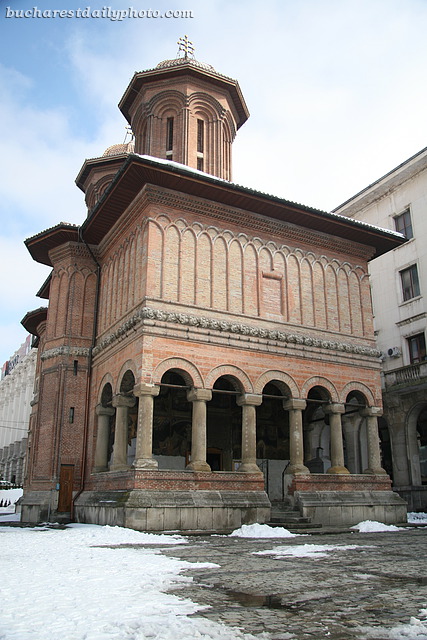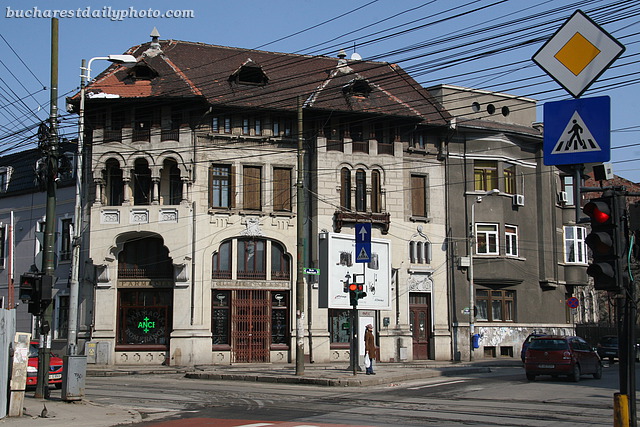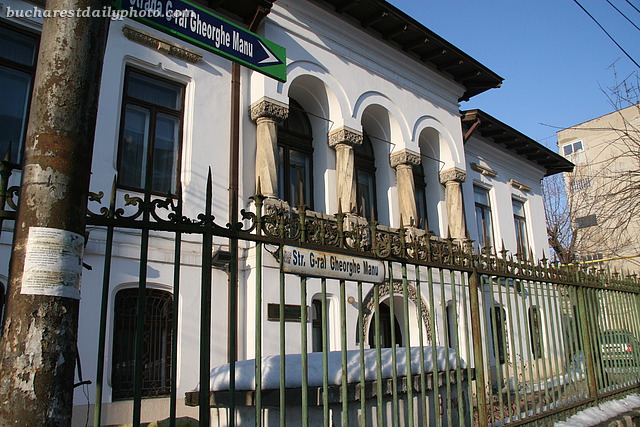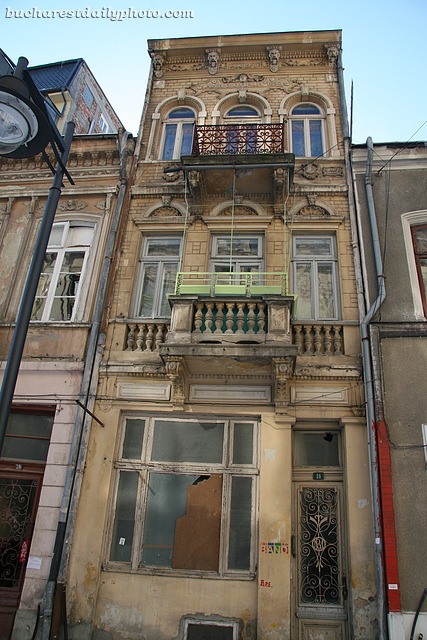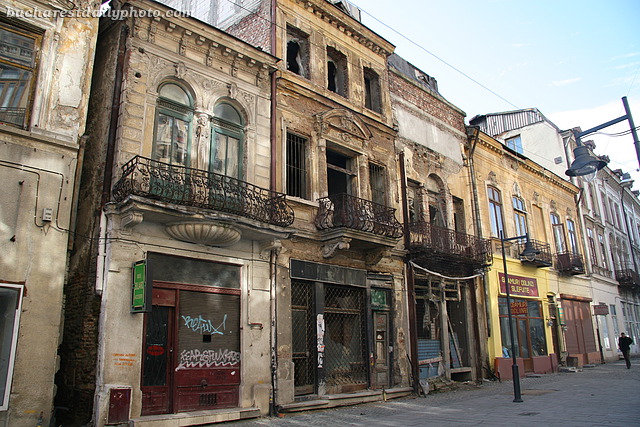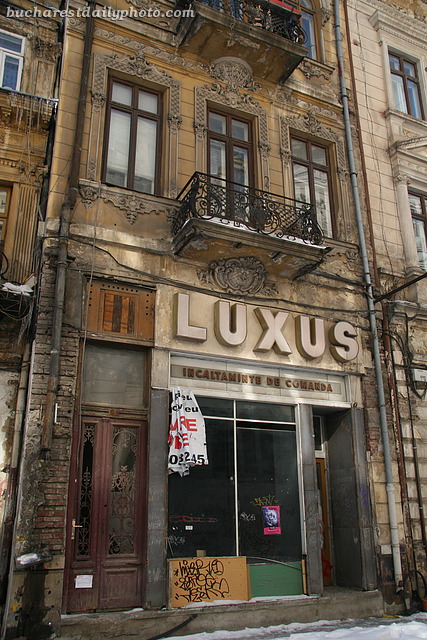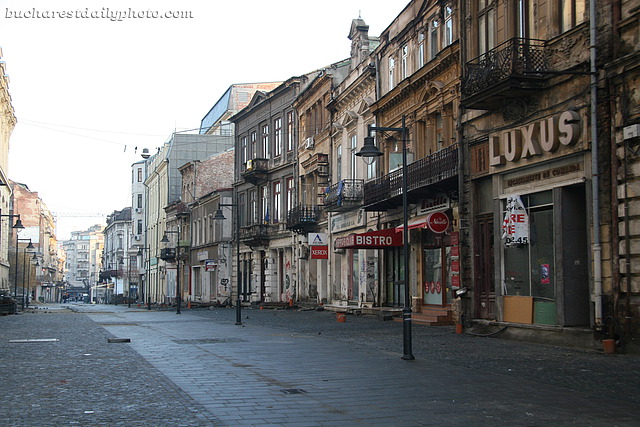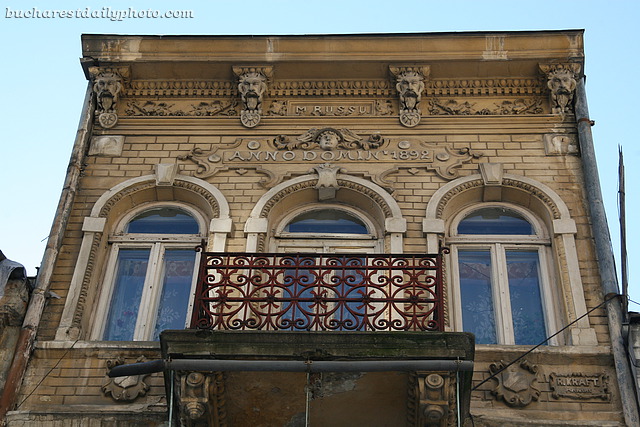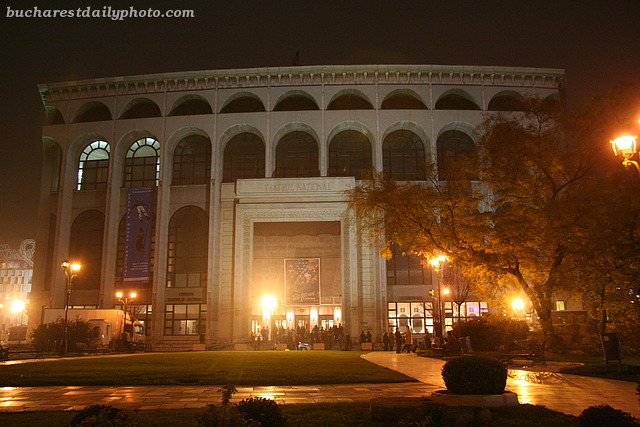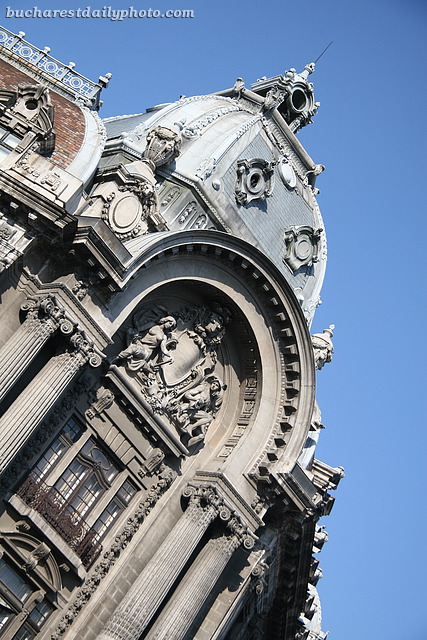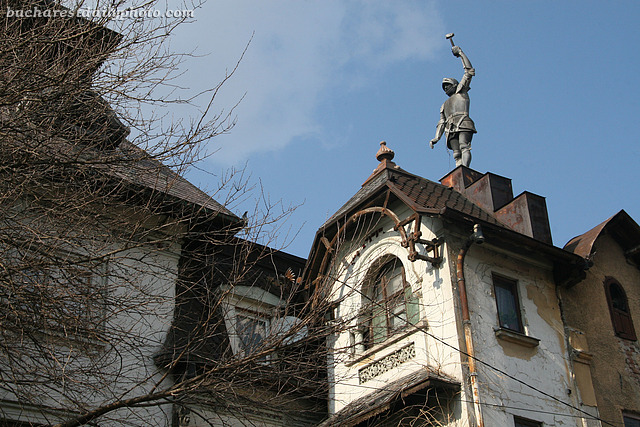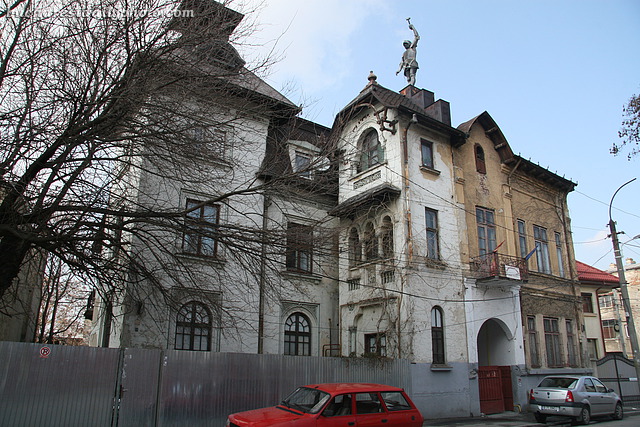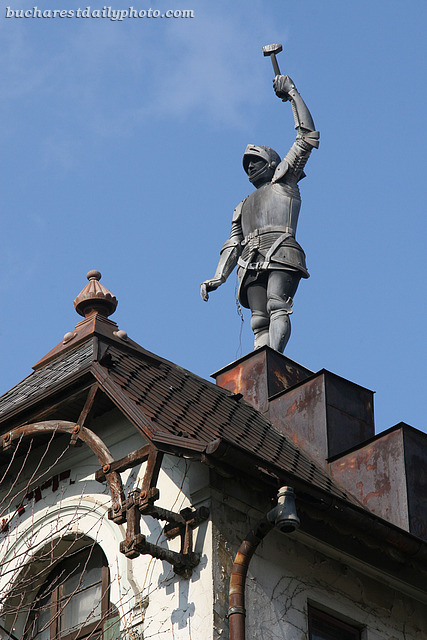The Central School is a school located in downtown Bucharest, one of the oldest schools in the city. The institution was established in March 1851 by Prince Barbu Ştirbei as a school for girls and the school opened in 1852. The building that houses the Central School was built in 1890 by Ion Mincu, who is considered one of the greatest Romanian architects which is why Bucharest’s University of Architecture bears his name. He was a promoter of the Neo-Romanian style of architecture and the Central School is the best example of a Neo-Romanian style building. It has a rectangular layout, similar to that of a monastery complex, with an inner courtyard surrounded by passageways.
Kretzulescu Church aka Creţulescu Church is an Eastern Orthodox Church located on one of the corners of the Revolution Square, by the former Royal Palace. This red brick beauty is one of the oldest churches in Bucharest, being built between 1720-1722 by the boyar Iordache Cretulescu and his wife Safta, a daughter of prince Constantin Brâncoveanu. The church is built in the style created by Constantin Brâncoveanu, a seventeenth century ruler of Wallachia, who commissioned numerous buildings during his reign and set out to create a distinctive national genre of architecture. The exterior of the church was originally painted, but the paint was removed during the 1935-1936 renovations, conducted by architect Ştefan Balş. More renovations were done after the 1977 earthquake and the Revolution of 1989. During the communist regime the church was scheduled for demolition but it was saved through the intervention of architects.
Yesterday I’ve showed you what is considered one fine example of the Neo-Romanian style of architecture. The building in today’s photo, a historical pharmacy on the corner of Vasile Lascăr and Maria Rosseti Streets is another good example of this kind of architecture which blends together elements from the local peasant architectural tradition with Byzantine and Ottoman elements and late Italian Renaissance themes. Since I’m traveling and I’m without my books I can’t tell you exactly when it was built. I tried to look it up on the web but I couldn’t find anything. I guess I’ll have to add the information when I get back.
This beautiful house on Calea Victoriei that nowadays houses the Art History Institute, was built in 1910-1912 by architects Grigore Cerchez and Alexandru Clavel. It is considered a great example of the Neo-Romanian style of architecture, which was very popular in Bucharest at the end of the 19th century beginning of the 20th. The Neo-Romanian style builds on Brâncoveanu-style, a traditional style developed during the reigns of Constantin Brâncoveanu (1688–1714) which integrated local peasant architectural tradition with Byzantine and Ottoman elements. The Neo-Romanian was the answer to the attempts of creating a national style in Romanian architecture. The house was built on the site of a 17th century construction and makes use of its preexisting walls. The owner of the building was the jurist Constantin Dissescu (1854-1932), a university professor who was the author of the first Romanian textbook on constitutional law. For a brief period of time Dissescu also served as the Minister of Justice and helped draft the 1923 Romanian constitution.
Because yesterday’s photograph showed only the upper floor of a building, it didn’t give a good idea about the extent of the work that needs to be done to bring the houses in the Old Town to their former glory. Which is why I decided to post a few more photos taken on Franceză Street. The first one shows the house whose second floor was the subject of yesterday’s shot. It is really a pity that this houses are not renovated because I believe – and I’m surely not the only one to believe it – that this area has a lot of potential.
Today’s photo shows the upper floor of a run down house on Franceză Street, one of the streets in the Old Town that’s already been repaved. Unfortunately, the buildings that line the street are dilapidated and in great need of repairs. Despite their decaying air, I personally really love them. I believe that through all that tired look you can discern their former elegance.
For the next two weeks I’ll be blogging from abroad. I do plan on having uninterrupted service, so please continue to stop by.
In my earlier post about Bucharest’s National Theatre I’ve talked about its facade being remodeled in 1984, which lead to the version which can be seen in today’s photograph. The theatre is scheduled to undergo renovation soon and if everything works as planned in two years we will admire a new facade, similar to the 1973 version!
Today, the City Daily Photo blogging community pays tribute to Eric Tenin of Paris Daily Photo. Five years ago, on March 11th 2005, Eric started his daily photo blog of Paris and he’s been blogging ever since without missing one day. It was his blog that I found last summer while researching for a trip to Paris, and that inspired me to create this photo blog of my home city. To celebrate his 5th anniversary and honor Eric, the suggestion for today’s theme was to use one of his photographic techniques, be it the placing of the camera on the ground to make an image, or of skewing/tilting the composition. Click here to view thumbnails for all participants
The photograph shows the building which now holds the National Library of Romania and which before 1955 used to be the Palace of Stock Exchange. It was built in French Neoclassical style, between the years 1906 and 1911, after plans by architect Ştefan Burcuş.
As you can see above, the house in today’s photo has quite an unusual roof. It was the house of Alexandru Dimitriu (1871-1955) a skillful metalworker who between 1900 and 1940 built and designed a number of metallic roofs and cupolas in Bucharest. His works can still be admired today at the Romanian Athenaeum, the Northern Train Station, the Palace of Patriarchy, the District 1 City Hall (which also has an armored knight atop its tower), the nowadays National Library, the Silvestru Church, to name a few. The armored knight that he placed on the roof of his own house holds a hammer in one hand, a mark of the owner’s trade. I think it looks quite unusual.
